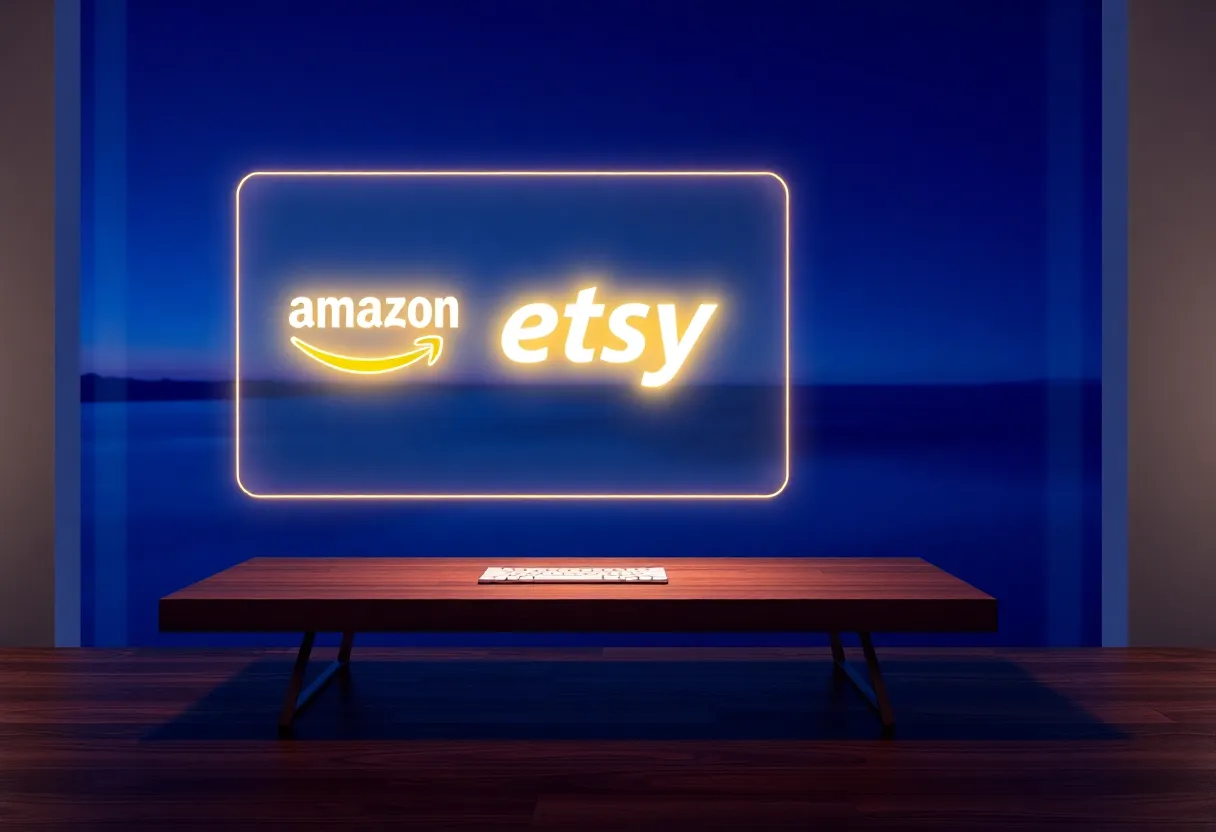Table of Contents
Shopify Amazon Etsy Integration Basics
Did you know that sellers who use multiple sales channels can increase their revenue by up to 190%? This staggering statistic highlights why many Shopify store owners are eager to expand their reach to platforms like Amazon and Etsy. Let’s dive into the world of multi-channel selling and explore how it can supercharge your e-commerce business.
Connecting your Shopify store with Amazon and Etsy opens up a whole new world of possibilities. Here are some key benefits:
- Wider audience reach
- Increased brand visibility
- Diversified revenue streams
- Improved inventory management
- Enhanced customer insights
However, managing multiple sales channels isn’t without its challenges. Many sellers struggle with:
- Keeping inventory synced across platforms
- Managing orders from different sources
- Maintaining consistent pricing and product information
- Handling shipping and fulfillment for various channels
These hurdles can be overcome with the right approach. Let’s look at some integration methods:
| Method | Pros | Cons |
|---|---|---|
| Manual | Low initial cost | Time-consuming, error-prone |
| Automated | Time-saving, accurate | May require investment |
While manual integration might seem cost-effective at first, it can quickly become a time sink. That’s where automated solutions come in. Tools like Marketplace Connect can streamline the process, saving you hours of work and reducing errors.
Check out this video for a practical guide on integrating Shopify with Amazon:
As you can see, the right integration strategy can make a world of difference in managing your multi-channel e-commerce business. By leveraging the power of automation, you can focus on growing your brand while your sales channels work together seamlessly.
Setting Up Amazon Integration with Shopify
Selling on both Amazon and Shopify can really boost your sales. But managing two stores can be a headache. Let’s look at how to connect them easily.
First, you’ll need an Amazon Professional Seller account. This lets you list products and access the tools for integration. Once you have that set up, you can link Shopify to Amazon.
Key steps for integration:
- Set up Amazon Professional Seller account
- Use Shopify’s Amazon sales channel or a third-party app
- Sync your product listings
- Optimize listings for Amazon’s search
Syncing your products is crucial. Make sure your inventory, prices, and descriptions match on both platforms. This keeps customers happy and prevents overselling.
Integrating Etsy with Your Shopify Store
Etsy is great for handmade and unique items. Connecting it with Shopify can help you reach more customers. Here’s how to do it:
- Set up your Etsy shop if you haven’t already
- Get API access from Etsy
- Choose an Etsy integration app for Shopify
- Connect your accounts
- Sync your inventory
Remember, Etsy has specific rules for products. Make sure your listings follow their guidelines. This helps avoid issues down the road.
Managing Etsy-specific details can be tricky. Things like custom orders and variations need special attention. A good integration tool can help with this.
- Keep track of Etsy’s fees
- Manage custom orders carefully
- Update inventory across both platforms
This video breaks down the differences between Shopify, Amazon, and Etsy. It’s helpful for understanding each platform’s strengths.
Streamlining Operations with Integration Tools
Managing multiple sales channels can get complicated fast. That’s where integration tools come in handy. They can save you time and reduce errors.
| Feature | Benefit |
|---|---|
| Unified order management | See all orders in one place |
| Real-time inventory sync | Prevent overselling |
| Automated pricing updates | Keep prices consistent across platforms |
Tools like Marketplace Connect can handle these tasks automatically. This frees up your time to focus on growing your business.
One big advantage is avoiding overselling. When you sell the last item on one platform, it updates everywhere else. This keeps customers happy and saves you from awkward apology emails.
Key benefits of integration tools:
- Save time on manual updates
- Reduce errors in inventory and pricing
- Manage multiple channels easily
By using a tool like Marketplace Connect, you can streamline your multi-channel selling. It handles the technical stuff so you can focus on your products and customers.
Remember, the goal is to make selling easier, not more complicated. Good integration tools should simplify your workflow, not add to it. Look for options that fit your specific needs and budget.
Maximizing ROI from Multi-Channel Integration
Integrating Amazon and Etsy with your Shopify store opens up a world of opportunities, but it also brings challenges. Let’s break down how to make the most of this multi-channel approach.
First, it’s crucial to understand the unique features of each platform:
- Amazon: Massive customer base, A+ Content for brand storytelling
- Etsy: Niche market for handmade and vintage items
- Shopify: Full control over your brand and customer experience
Leveraging these platform-specific strengths can significantly boost your overall sales. For instance, using Amazon’s sponsored products feature might drive traffic to your higher-margin items on Shopify.
Balancing inventory across channels is a delicate art. Too much stock ties up capital, while too little leads to missed sales. A smart approach involves:
- Identifying bestsellers on each platform
- Adjusting stock levels based on seasonal trends
- Using data to predict demand and optimize inventory
Cross-platform data analysis is where the real magic happens. By comparing performance across channels, you can:
- Spot emerging trends early
- Identify which products perform best on which platforms
- Adjust pricing strategies for maximum profitability
Tools like Marketplace Connect make this process seamless, automatically syncing orders and inventory across platforms. This not only saves time but also reduces errors, allowing you to focus on growing your business.
The key to success is treating each platform as part of a cohesive strategy, not as separate entities. By doing so, you create a synergy that can dramatically increase your overall ROI.
Remember, the goal isn’t just to be present on multiple channels, but to create a unified brand experience across all of them. This approach not only boosts sales but also builds customer loyalty, setting the stage for long-term success in the competitive e-commerce landscape.
Wrap-up
Selling on multiple channels can really boost your sales, but it can also be a headache to manage. The key is finding the right tools to make it easier. By connecting your Shopify store with big marketplaces like Amazon and Etsy, you open up your products to millions of new customers.
But remember, it’s not just about listing your items everywhere. You need to keep track of inventory, orders, and shipping across all platforms. That’s where integration apps come in handy. They do the heavy lifting so you can focus on growing your business.
If you’re ready to expand your e-commerce reach, consider giving Marketplace Connect a try. It syncs your Shopify store with various marketplaces, helping you manage everything in one place. Whether you’re just starting out or looking to streamline your existing multi-channel setup, the right integration can make a big difference.
Now that you’ve got the basics down, you might have some questions about getting started. Let’s tackle some common concerns in our FAQ section below.
Common Questions About Shopify Amazon Etsy Integration
How do I manage different pricing across platforms?
Managing pricing across multiple platforms can be tricky. Many sellers use a base price and adjust it for each marketplace to account for fees and competition. Tools like Marketplace Connect can help by allowing you to set platform-specific pricing rules, making it easier to maintain consistent profit margins across channels.
What about handling returns and customer service?
Each platform has its own return policies and customer service expectations. It’s important to familiarize yourself with these and create a unified strategy. Some sellers use a centralized customer service system to manage inquiries from all channels in one place. This helps maintain consistency in your responses and keeps things organized.
How can I deal with platform-specific fees and regulations?
Stay informed about each platform’s fees and regulations by regularly checking their seller guidelines. Factor these costs into your pricing strategy. Some integration tools can help by automatically calculating fees for each sale, making it easier to track your actual profits across different marketplaces.
Is it possible to sync inventory across all channels?
Yes, it’s possible and highly recommended to sync inventory across channels. This prevents overselling and stock issues. Many Shopify apps, including Marketplace Connect, offer real-time inventory syncing across multiple platforms. This feature updates stock levels automatically when a sale occurs on any connected channel.
How do I handle different product requirements for each marketplace?
Each marketplace has unique product listing requirements. It’s best to create a master product list with all possible details, then use integration tools to map these details to the specific fields required by each platform. This approach saves time and ensures your listings meet each marketplace’s standards.
Can I automate order fulfillment across multiple channels?
Absolutely. Many multi-channel integration tools offer automated order processing features. For instance, Marketplace Connect can consolidate orders from different platforms into your Shopify dashboard, streamlining your fulfillment process. This automation reduces manual work and helps prevent shipping errors.





